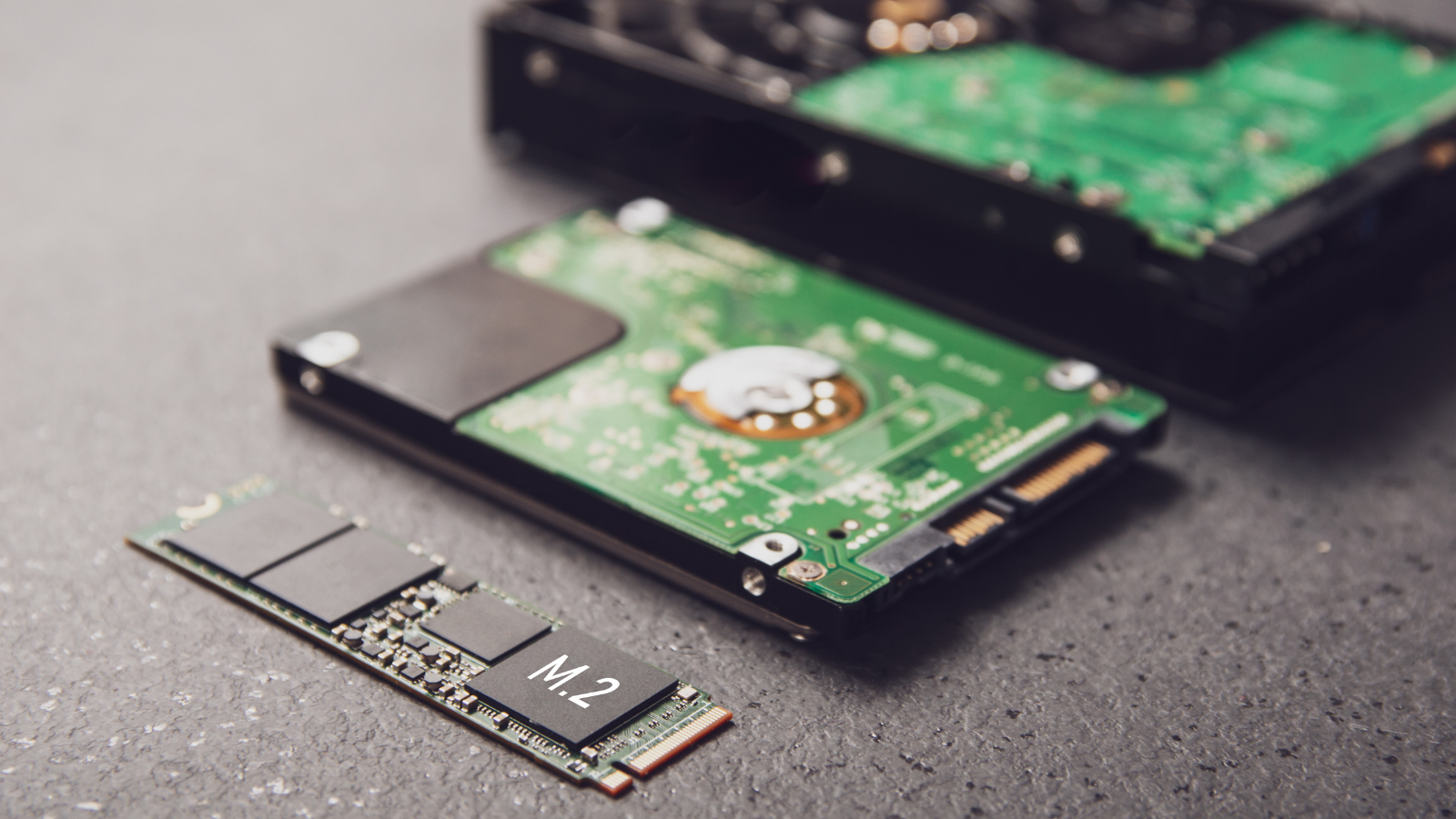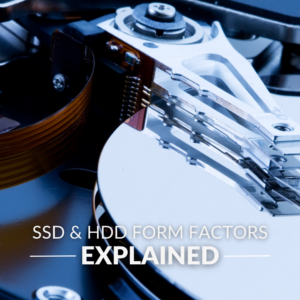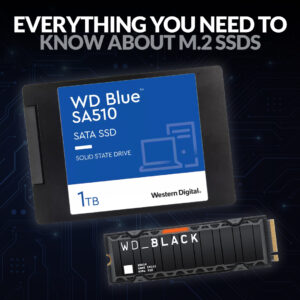Graphics cards and processors might get the headlines, but no gaming PC is complete without storage. The type of storage you use can make a huge difference to the speed and responsiveness of your PC.
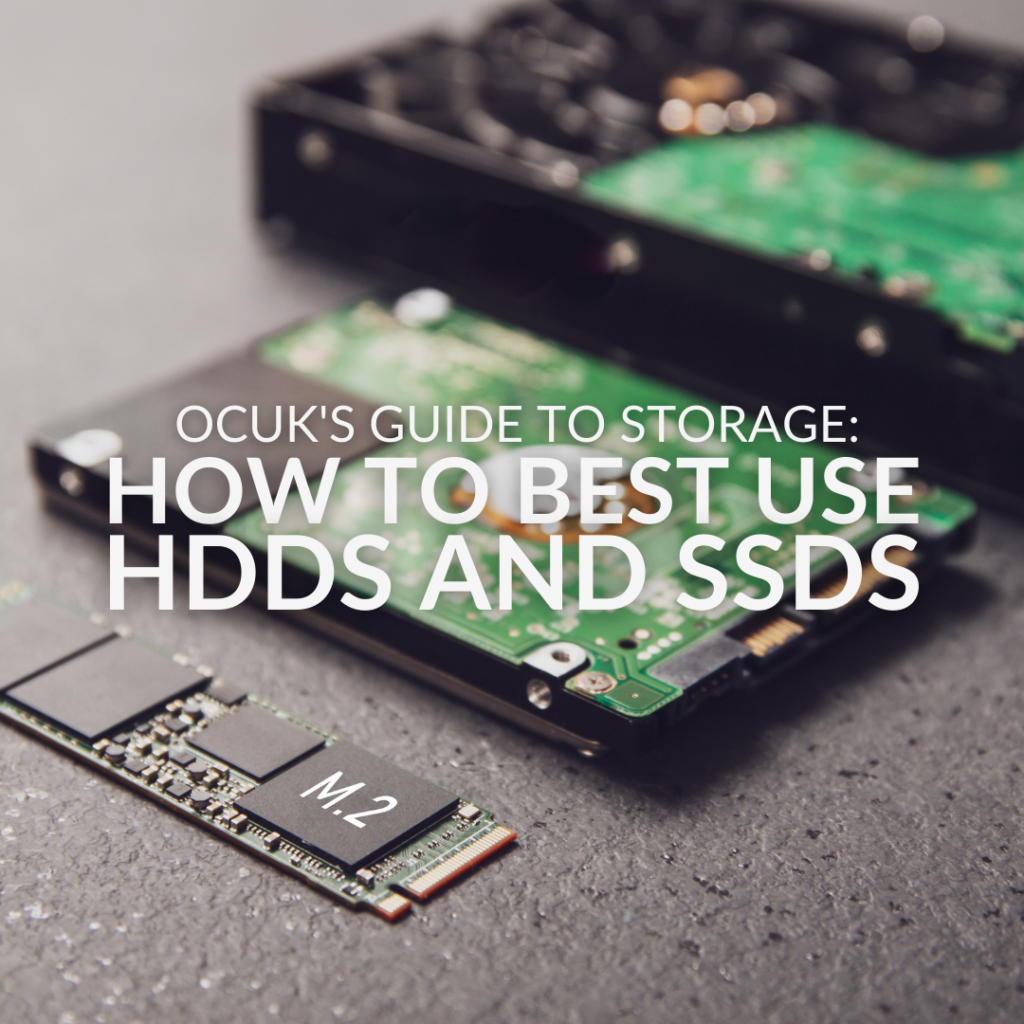
This guide is going to take you through how each different type of storage drive can be best placed in your gaming PC. From ultra-fast NVMe SSDs to large-capacity HDDs, they all have a use and function to optimise your gaming PC’s performance.
Is Storage Important?
Storage is very important. It holds your files, media, operating system, applications, and downloads. There are two common types of storage drives: HDDs and SSDs.
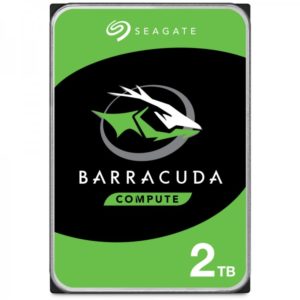
Hard disk drives (HDDs) are a long-established piece of technology, utilising moving parts to read and write your data. You tend to get more bytes for your buck with these drives, but they are generally quite slow and can be fragile.
Solid state drives (SSDs) are still relatively new, but the technology is increasingly more accessible. These feature no moving parts and utilise semiconductor memory to store your data. As a result, these drives have much faster read and write speeds. Their only downside is the price, as they tend to cost more per byte than their mechanical counterparts.
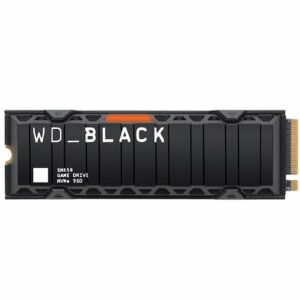
We are going to take a closer look at both HDDs and SSDs – exploring the form factors, connectivity options, and, most importantly, where they are best placed in your gaming PC. This will be just a glimpse of the amazing storage devices you can find at Overclockers UK. Be sure to explore our full selections!
Before We Start…
Before we get into the nitty-gritty of storage solutions, here is a quick rundown of some of the terms that’ll be used and what they mean.
- SATA: Short for Serial Advanced Technology Attachment. This connector has been in common use since 2000 and its most current generation is SATA 3. This has transfer speeds up to 4.8Gbit/s, which is ideal for HDD technology. SSD read and write speeds operate at this limit.
- NVMe: Short for Non Volatile Memory Express. This protocol enables data to be carried over the PCIe interface and connects either via an M.2 or PCIe slot. It has been designed to be utilised with flash storage, so it can facilitate much faster transfer speeds.
- PCIe: Short for Peripheral Component Interconnect Express. This is designed for peripherals and components that mount directly to the motherboard. Larger devices often feature a built-in bracket that can be supported by expansion slots on the rear panel of a PC case.
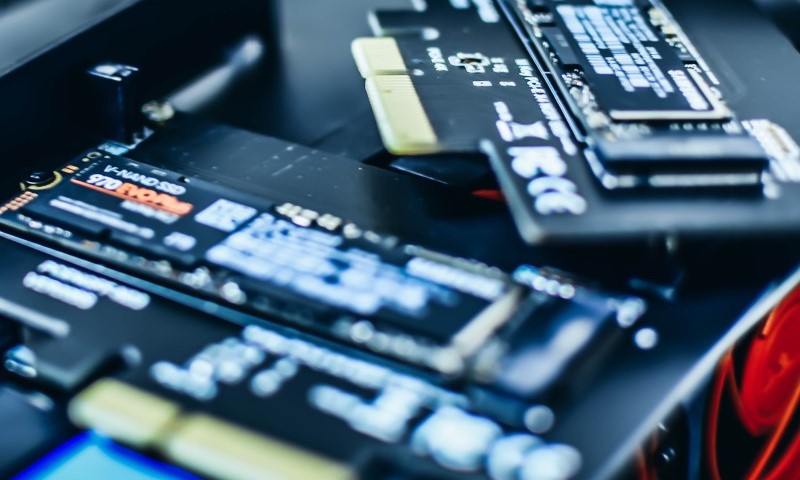
HDDs
If you were to describe your storage solution as the brains and brawn, the HDD is definitely the brawn. (Why you’re using this metaphor, I don’t know – just go with it.) Hard disk drive technology is very accessible and cheaper to produce, so they tend to have high capacities. As of this post going live, the highest capacity drive we sell at Overclockers UK is a whopping 22TB! How many memes would it take to fill 22TB?
There are three types of HDD that we’ll be looking into: 3.5”, 2.5”, and external.
3.5” SATA HDDs
It is more than likely that your gaming PC has a 3.5” HDD in it. This is the standard form factor for hard drives, and they have the best byte to price point. These drives tend to be mounted in your PC case, either in an included drive cage or on dedicated trays.
SATA is the means of connection, a standard that has been around since the early 2000s. A motherboard has SATA ports, which you connect the hard drive to via a SATA cable. HDDs also need powering, which is done directly by the power supply, with its own SATA cable.
Pros:
- High capacity
- Low cost
- Widely available
- Extensively supported
Cons:
- Slower performance
- Noisy
- Prone to damage from vibrations
Truthfully, we can’t see HDDs going anywhere any time soon. Why? Because they still serve a fantastic purpose in our gaming PCs. HDDs are best for data storage. Instead of running your applications and games from an HDD, they are great for holding your files, media, and music. In fact, for creators and streamers, it is definitely beneficial to have an HDD for your secondary or tertiary storage drives – got to keep your creative project somewhere, right?
WD Blue 8TB 3.5” HDD
- 8TB 3.5″ hard drive
- 5640 RPM
- 128MB cache
- SATA 6Gb/s interface (SATA 3)
- 180MB/s average data transfer speed
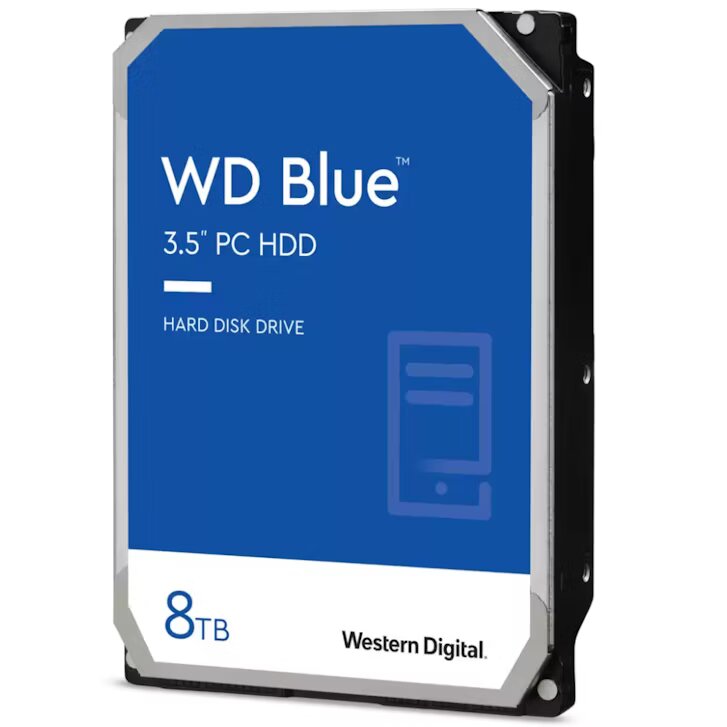
2.5” SATA HDDs
We commonly see 2.5” SSDs, but did you know there are 2.5” HDDs, too? These utilise the same mechanical design, just in a smaller form factor. One thing to note is they have a lower power draw, resulting in a maximum of 5400RPM, whereas their full-size counterparts reach up to 7200RPM.
Having the same form factor as SATA SSDs, these drives are easy to integrate within your gaming PC. Plus, they also utilise the SATA connection, which keeps things nice and simple.
Pros:
- High capacity
- Accessible connectivity
- Wide compatibility
Cons:
- Slower than 3.5” HDDs
- Noisy
- Prone to damage
There are needs for a 2.5” HDD in your gaming PC. If you are limited on space and have an SFF PC case, then these can be utilised in the 2.5” bays traditionally earmarked for SSDs. However, they might be better suited to upgrading storage on gaming laptops and other mobile devices. Their smaller form factor makes them ideal for slim chassis. Just be mindful that making upgrades to these devices may void your warranty.
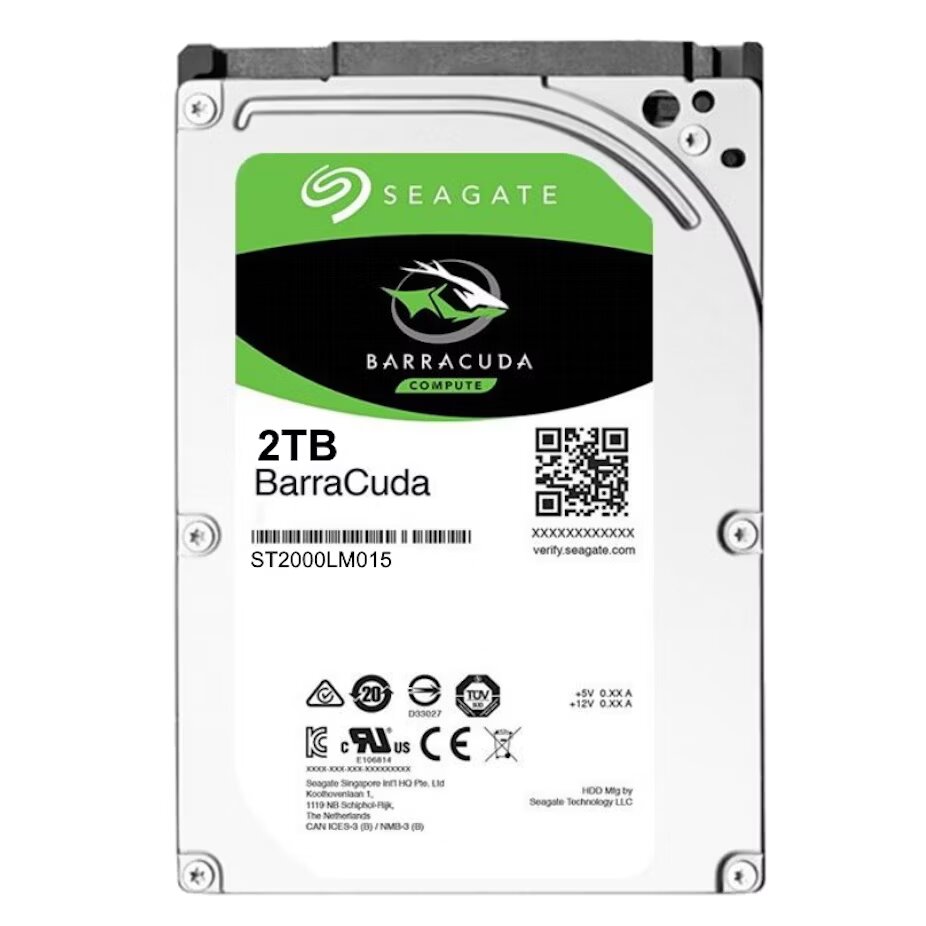
Seagate Barracuda 2TB 2.5” HDD
- 2TB 2.5″ HDD
- 5400RPM
- 128MB cache
- SATA 3 interface
- 140MB/s average transfer speed
External HDDs
Our final HDD is the external kind. These don’t have a uniform shape and size on the exterior but utilise the same mechanical technology as their internal counterparts. The hard drive mechanics are housed inside stylish boxes, featuring sleek aesthetics and sometimes even RGB lighting.
External hard drives utilise USB connectivity, which is fabulous for a few reasons. One, USB is widely used. Two, USB ports are much easier to access than internal SATA ports. For another, it has fast and reliable data transfer speeds, so you won’t get bogged down waiting for documents to send or open. All in all, USB for the win.
Pros:
- Offer expanded capacity
- USB connectivity
- Portable
- Stylish
Cons:
- Noisy
- Take up desk space
- More expensive than internal drives
- Can need external power
External hard drives very clearly fill a need – many, in fact! Those with gaming laptops or SFF PCs can use them to expand their storage without dismantling a thing. Need to take your files on the go? That’s easy thanks to their portability. Have finished projects that you want to take off your PC to free up more space? Plus, as they utilised USB connectivity, they can be plugged into a variety of devices. External hard drives are multi-purpose and endlessly useful.
Seagate Expansion 6TB External Desktop Hard Drive
- 6TB external HDD
- USB 3.0 connectivity
- 18W power adapter
- Compatible with Windows and Mac
- Seagate Rescue Data Recovery Services
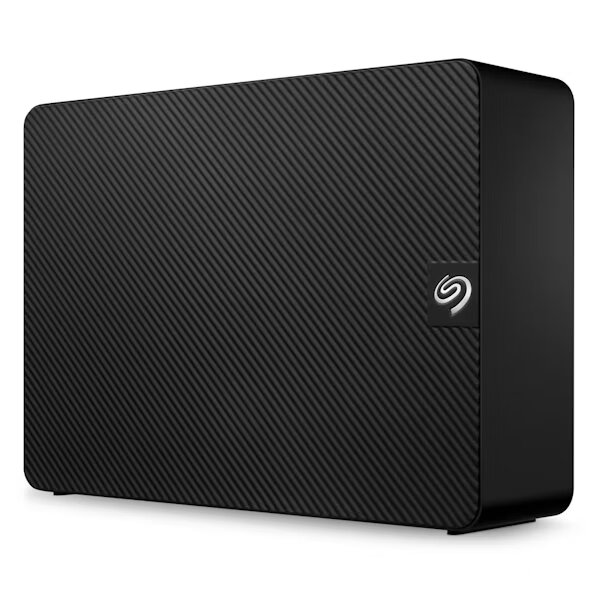
SSDs
Keeping with the metaphor from earlier, SSDs are the brains of your storage. They are fast, utilising flash memory arrays for near-instant access to all your data. No moving parts to slow you down. What’s more, they are smaller, make no noise, and consume less power. They are more efficient than HDDs, but still lack the capacity and cost more to produce. There are, however, a few different types available which you can select depending on budget, connectivity options, and your intended upgrade path.
The types of SSD we’re looking at are: 2.5”, M.2 SATA, and M.2 NVMe PCIe.
2.5” SATA SSDs
2.5” SATA SSDs tend to fill the same niche as 3.5” HDDs. They have higher capacities, the bigger form factor, and can be mounted within your PC case rather than directly onto the motherboard. But instead of slow mechanical moving parts, they utilise innovative cell technology to instantaneously access your data and files.
These utilise the SATA connector, which is slower than other SSD interfaces but still out-performs hard drives every time. They have read and write speeds up to 600MB/s and can boot your gaming PC up in fifteen seconds.
Pros:
- Fast read and write speeds
- Widely used form factor
Cons:
- Smaller capacities
- More expensive
SATA SSDs are great for expanding your storage and providing a boost to your solution’s speed. They can be used for frequently accessed data, applications and programmes, or even your operating system if they’re going to be the only SSDs in your PC.
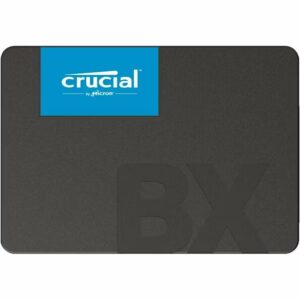
Crucial BX500 1TB 2.5″ SSD
- 2.5″ 1TB SSD
- SATA 3 connectivity
- 540MB/s read and 500MB/s write speed
- 75K / 70K IOPS
- 360TWB
M.2 SATA SSDs
Now we’re moving onto the speedy stuff! There are two types of M.2 SSDs, the first utilises the M.2 SATA interface. These solid state drives are the slim, flat models and they don’t require any cables as they plug directly into your motherboard.
They connect via the M.2 slot, utilising SATA technology for average transfer speeds of 6Gbps. Motherboards typically have two M.2 slots, and it’s important to check whether it supports the SATA or NVMe interface. The physical connectors are different, and one won’t work with the other. SATA M.2 drives have two indents in their connectors, whilst PCIe M.2 SSDs only have the one.
Pros:
- Fast read and write speeds
- No cables required
- Cheaper than NVMe storage
Cons:
- Expensive
- Tools needed for installation
M.2 SATA SSDs have a better byte to price point than their NVMe brethren whilst having much faster read/write speeds than HDDs. This makes them perfect for budget builds or for those looking for higher capacities without breaking the bank. They are fantastic for storing your operating system, games, and most used applications, as they drastically reduce loading times in comparison to mechanical drives.
WD Blue SA510 500GB SATA M.2 2280 SSD
- 500GB 2280 SSD
- SATA M.2 connectivity
- 540MB/s read and 510MB/s write speed
- 90K/82K IOPS
- 200TBW
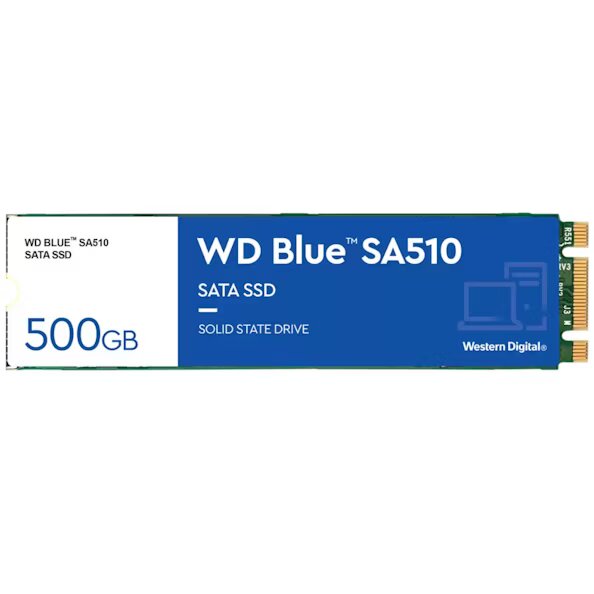
M.2 NVMe PCIe SSDs
The second type of M.2 SDDs are PCIe M.2 drives that utilise NVMe technology. This is the fastest type of SSD, with incredible data transfer speeds that are only going to improve with each PCIe generation. (More on that later!)
NVMe is designed to be future-proof, as it takes advantage of flash storage in conjunction with the PCIe interface. These connect to your motherboard via the PCIe x1 or x4 slots.
Pros:
- Fastest drives on the market
- Extensive compatibility
- No cables required
Cons:
- Most expensive drives on the market
If you want the best of the best, then the NVMe PCIe M.2 SSDs are your drive. Their lightning-fast read and write speeds make them great for storing games and creative applications, as they provide near-zero latency and quick loading times. Even on intensive tasks like image rendering. With great performance comes a hefty price tag, though, and it is definitely something to factor into your decision when buying storage drives.
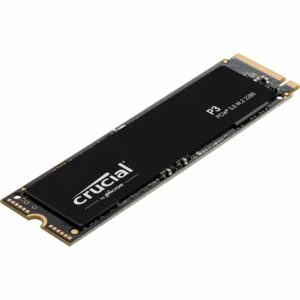
Crucial P3 2TB M.2 2280 PCIe 3.0 NVMe SSD
- 2TB 2280 M.2 SSD
- PCIe 3.0 NVMe connectivity
- 3500MB/s read and 3000MB/s write speeds
- 650K/700K IOPS
- 440TBW
PCIe 4.0 vs 5.0
Whilst there are still PCIe 3.0 drives, there are two other PCIe standards more commonly in use: PCIe 4.0 and PCIe 5.0. Gen 4 has been around longer and is well established, whilst Gen 5 is a recent innovation with limited support. 13th Gen Intel and AMD Ryzen 7000 Series are both compatible with PCIe 5.0, and their respective motherboards will also support this standard. However, if you are making a quick upgrade to your storage only, then you’re more likely to have support for PCIe 4.0.
Naturally, PCIe 5.0 is faster than PCIe 4.0, with a bandwidth of 128 GB/s in comparison to 64 GB/s. Regardless, PCIe 4.0 SSDs can have read speeds of 7,300MB/s and write speeds of 6000MB/s, which is incredibly fast indeed! Plus, they are also more readily available and cheaper than their PCIe 5.0 counterparts. For comparison, a Crucial 1TB PCIe 4.0 SSD costs £169.99 whilst the PCIe 5.0 version is £214.99*. However, it does have read and write speeds of 11,700MB/s and 9,500MB/s, respectively, so that extra cost may be worth it if you have Gen 5 support!
Seagate FireCuda 530 1TB SSD PCIe Gen4 NVMe M.2 SSD (with Heatsink)
- 1TB 2280 M.2 SSD
- PCIe 4.0 and NVMe connectivity
- 7300MB/s read and 6000MB/s write speeds
- 1.8 million hours MTBF
- 1275TBW
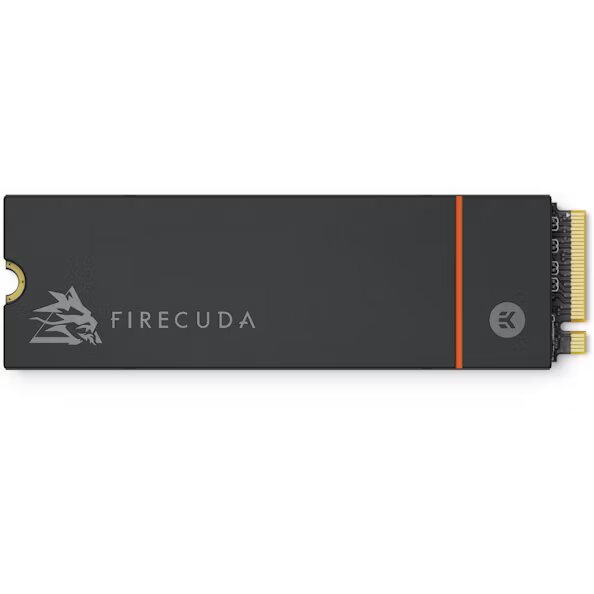
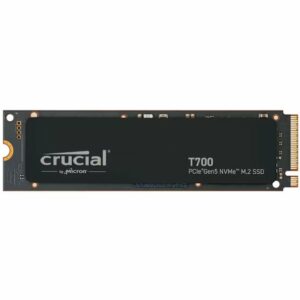
Crucial T700 1TB NVMe PCIe Gen5 M.2 SSD
- 1TB 2280 M.2
- PCIe 5.0 and NVMe connectivity
- 11700MB/s read and 9500MB/s write speeds
- Microsoft DirectStorage technology
- 600TBW
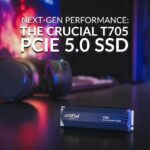
Crucial is at the forefront of storage technology. Their T705 SSD even has its own deep dive!
*Prices correct at the time of writing.
A Few More Points to Consider
We’ve talked about where each storage drive is best placed, but there are a few more things you should take into consideration when purchasing one for your gaming PC. These are Total Bytes Written (TBW), Data Lines, and Input/Output Operations per Second (IOPS).
TBW
TBW signifies how much data can be written onto your HDD or SDD. A drive’s capacity may be a maximum of 2TB, for example, but over time you can write, erase, and re-write more data than 2TB’s worth. Therefore, the TBW is a much higher number. This, then, gives you an idea of how long a drive is likely to last for and when it could start to fail, as even the memory chips on SSDs see wear and tear. For example, a 150TBW means that a drive can have 40GB of data written to the disk daily for at least ten years. This is also not entirely representative of its life span, as these are minimum possible number, rather than the maximum. Plus, it is unlikely that you would be subjecting your storage to that much use every day!
One thing to note with TBW, it has two long form names that essentially mean the same thing. Manufacturers will either call it “Total Bytes Written” or “Terabytes Written”. They equate to the same meaning, but it’s worth knowing so it doesn’t catch you out.
Data Lines
Data lines are specific to PCIe SSDs, as it refers to the number of PCIe lanes and generation they will utilise on the motherboard. It is important to pay attention to what your motherboard supplies and match the SSD accordingly.
What may not be commonly known is that only a certain number of data lines can be used, depending on both the motherboard and processor. For example, if you install an M.2 PCIe SSD the SATA ports on your motherboard may become unusable. The manufacturer’s specs for both components will clarify what can and can’t be simultaneously supported.
IOPS
There are two basic types of IOPS: sequential and random. But what does it mean? IOPS is the measure of the maximum number of reads and writes to non-contiguous locations. Both HDD and SSD performance can be quantified by input/output operations per second.
Sequential access means large amounts of data transferred over a long period of time. Random access is lots of small data being retrieved. Of the two, random access is more demanding on your storage.
In simple terms, the higher the number assigned to IOPS, the better your storage device will be. As expected, SSDs outperform HDDs – with faster sequential and random IOPS across the board.
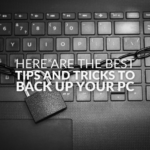
The smartest thing you can do with your storage is back it up. Check out all our tips and tricks to make sure your data is safe.
To Cool or Not To Cool?
With high performance comes excess heat – M.2 SSDs are no exception. So that leaves us with the question of whether or not they need a thermal solution to draw the heat away. In short, yes. Under heavy loads, this hardware can get hot and throttle, which can cause damage to the sensitive electronics. Cooling is required.
You have two options for storage cooling when it comes to M.2 SSDs. Many models will already have integrated heatsinks, meaning you need to ensure there is clearance in your case for this extra height. Upside is you don’t have to worry about buying a separate heatsink and ensuring compatibility. If your M.2 SSD does not have an integrated heatsink, then you can buy dedicated coolers separately, but they will have limited compatibility so it’s important to pair your drive and cooler accordingly.
Read More
We have written plenty of articles about storage over the years. Read on and brush up on all things storage! Plus, if you feel we’re missing a topic you’d like to learn about, let us know in the comments below and we’ll get an article written!
Smarten Up Your Storage
With an ever-expanding market, your storage solution has never been so flexible. Let us know in the comments below what combination of high-capacity HDDs and ultra-fast SSDs you’re using!
